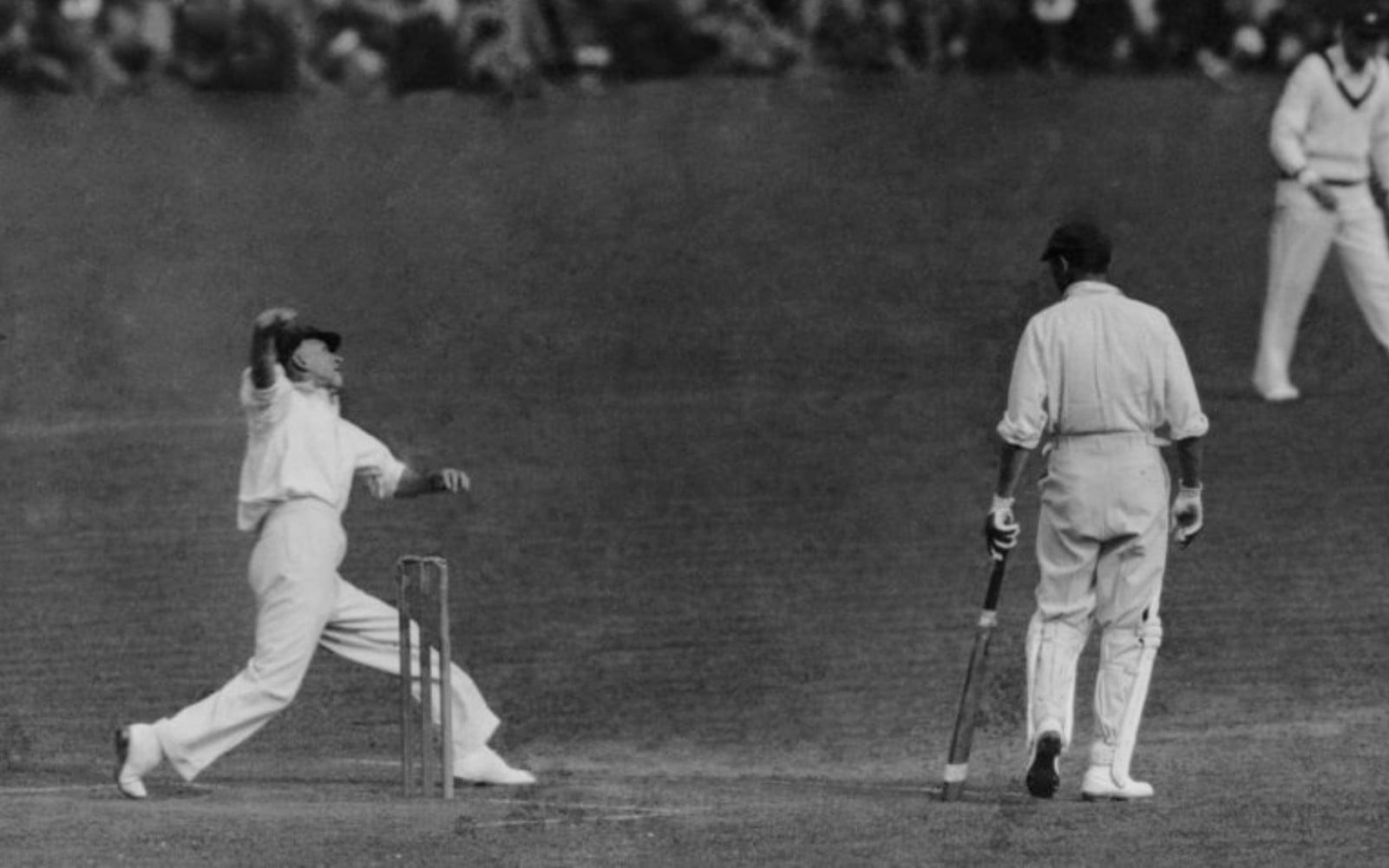I made (at least) two misstatements in my piece on John Reid.
The first was that New Zealand’s Tests against England in 1949 were played over four days. That was simply wrong. They were played over three days. Most of New Zealand’s Tests after that, until the mid-1960s, were played over four days, apart from the disastrous 1958 series in England. As late as 1970-71, against England at home, they played a four series.
The second misstatement was a little more nuanced. I said that, in his seminal book on the hundred greatest cricketers of all time, John Woodcock nominated only two New Zealanders, Reid and Richard Hadlee. That was not wrong in the same way, but it did ignore the fact that Clarrie Grimmett, one of the greatest of all leg-spinners, is tucked in by Woodcock at number 68, between Clive Lloyd and Malcolm Marshall. Grimmett was born in Dunedin in New Zealand’s South Island on Christmas Day, 1891, and had an extraordinary Test career for Australia.
Grimmett grew up in Wellington, near the Basin Reserve, and to begin with he wanted to be a fast bowler. A teacher saw him bowling leg breaks and told him not to bother with the fast stuff.
He played one first-class season for Wellington, in 1913-14 and then moved to Australia, to further his career as a sign-writer. He went to Sydney first, then Melbourne, and finally Adelaide, establishing himself in the South Australian State side in 1924-25 with 59 wickets at an average of 22. This earned him, at the age of 33, his Test debut in the fifth match against England at Sydney. He had a sensational start, taking 11 for 82.
Commenting on his performance in the second innings, M A Noble, the former Australian captain, said that Grimmett “bowled a good length with variations in flight and pace, and turned the ball occasionally.”
It doesn’t sound very exciting does it? But these are the eternal verities of spin bowling. Grimmett demonstrated them again and again throughout his career. He became the first man to take 200 wickets In Tests.He finished with 216 wickets in 37 Tests at an average of 24.21; that is an average of 5.83 wickets per Test. Just by way of comparison, Shane Warne’s average is 4.88. (Muttiah Muralitharan’s average is 6.02.) When Ray Lindwall overtook Grimmett as Australia’s leading Test wicket-taker he had played 20 more Tests.
Grimmett was part of a long line of wonderful Australian leg spinners and he formed valuable partnerships with two of them, Arthur Mailey at the start of his international career, and Bill O’ Reilly at the end. It is difficult to imagine three more different practitioners of what was essentially the same art. If Grimmett was a miser – his economy rate of 2.14 has been bettered only by four bowlers with more than 200 wickets – Mailey was a millionaire. Mailey, who, unlike Grimmett, spun the ball prodigiously, thought inaccuracy was a crucial element of the leg-spinner’s armoury. O’Reilly, writing Grimmett’s obituary in the 1981 Wisden, said “I cannot remember Grimmett bowling a long hop whereas Mailey averaged one an over.” He tossed the ball high, and relished being hit for six almost as much as deceiving a batsman. He himself was a relishable character. He wrote what ought to be everyone’s favourite sporting quotation, describing his feelings on bowling his hero, the immortal Victor Trumper, in a Sydney grade match: “I felt like a boy who had killed a dove.” When Victoria scored 1,107 against New South Wales at the MCG in 1925-26, Mailey took four for 362. “I was just finding my length when the innings finished,” he said. “A chap in the crowd kept dropping his catches”.
Mailey and Grimmett toured England together in 1926, both taking well over a hundred wickets on the tour as a whole and sharing 41 in the Tests.This was a great learning experience for Grimmett. When he returned to England in 1930 – post-Mailey and pre-O’Rellly – he was a magnificent bowler in English conditions. On the tour he took 144 wickets at 18.25. In the Test series, which Australia won 2-1, he took 29; ho other bowler on either side took more than 15. This was the series when Don Bradman scored 974 runs. Vic Richardson (the Chappell brothers’ grandfather) said the Australians could have won the series without Bradman, but not without Grimmett. He dismissed England’s best player, Walter Hammond, five times out of six in the first three Tests, twice in single figures and never for more than 38. Against Yorkshire at Sheffield he took ten for 37 in 22 overs.
His alliance with O’Reilly, which claimed a collective 169 wickets over four years started at home against South Africa in 1931-32, when Australia won all five Tests. Grimmett lost form during the Bodyline Series in 1932-33 and was actually dropped. But he was back against England in 1934 when the two leg-spinners shared 53 of the 71 wickets that fell to bowlers. Australia won the series 2-1.
By now O’Reilly, though much the younger man, was regarded as the senior partner. (Fortunately, they never argued about who was to bowl from which end; O’Reilly, unusually for a spinner, always preferred to bowl downwind.) O’ Reilly himself described their association, with characteristic modesty, as”one of cricket’s greatest success stories of the twentieth century”.
Part of the reason for that success was how different they were from one another. O’Reilly was tall and strongly built. “Tiger” could have been a fast bowler, and he had the fast bowler’s aggressive temperament. He did indeed bowl more quickly than most spinners, almost medium pace. Bradman said he was the best bowler he ever faced. The bowler with whom he was most frequently compared was the masterful, equally competitive Englishman S F Barnes.
Grimmett was no Tiger. His nickname was Scarlet after the elusive Pimpernel, because of the challenges he set batsmen with his infinite varieties (but everyone seems to have called him Grum). He was a smallish, beaky gnome-like figure. Prematurely bald, he often bowled in a cap. But this slightly unprepossessing figure was a feared destroyer on the cricket field.
As Noble observed, he was never a fierce spinner of the ball. But his degree of control, in terms of accuracy of line and length, and of pace and flight, his perseverance and his determination, were unparalleled.
As fellow leg-spinner Ian Peebles noted, “he embarked on each assault with a little lamb-like skip, trundled diagonally to the crease and swung a bony arm a little above shoulder height. This action helped him fire the ball into the batsman and made it incredibly difficult to attack him. The leg-break was his stock delivery. His googly was sparingly used and relatively easy to detect. He had an irresistible top spinner – batsmen were often trapped in front – and he has been credited with the invention of the flipper.
Grimmett was hard working, studious and endlessly inventive. He studied his opponents and worked out their weaknesses. “So long as Clarrie Grimmett was bowling”, Hammond wrote, “you had the nightmarish feeling someone was after you.” O’Reilly said Grimmett had the best cricket brain of anyone he knew.
In 1935-36 Richardson led Australia in South Africa. The visitors won 4-0. Grimmett took 44 wickets at 14.59. No Australian – not even Warne – has taken more in a series.
But Grimmett never played for Australia again. From a modern perspective it hardly seems astonishing that he was not selected for the Ashes series of 1936-37 and 1938. By the time of the tour of England in 1938 he was 47 years old. But he was still a performer of the highest quality; In the 1939-40 domestic season he was to take a record-breaking 73 wickets for South Australia.
According to Jack Pollard, in his magnificent Australian Cricket: The Game And The Players, Grum was “very cranky” about his omission from those two series. O’Reilly didn’t hold back in his Wisden tribute. “By now Don Bradman was Grimmett’s captain at South Australia, and also Australia’s captain. As such he was a national selector, and Bradman, it seemed, had become inordinately impressed with the spin ability of Frank Ward, a former clubmate of his in Sydney. “Ward was chosen to partner O’Reilly in those two series ahead of Grimmett. O’Reilly described his own reaction to Grimmett’s dismissal as “one of incredible loss and loneliness.” (Ward played four Tests in all and took 11 wickets at an average of 52.)
Grum never lost his love of the game though. He was always experimenting, discovering new variations. He had a net in his garden in Adelaide and never tired of practising, in summer, in winter, and long after he retired. Peebles said that in his 70s he was still wheeling away, but was heard to complain that he had lost a little of his pace off the pitch.





3 comments
Trevor
I suspect O’Reilly and Grimmett, like Warne, would have had highly successful Twenty20 careers.
Malcolm Merry
CG used to infuriate drivers following his car slowly down the long, straight, traffic light -infested King William St in Adelaide. What they didn’t realise is that he had worked out precisely the speed at which to catch all the green lights without having to stop.
Piers Pottinger
Very interesting stuff especially for the purist cricket fan.